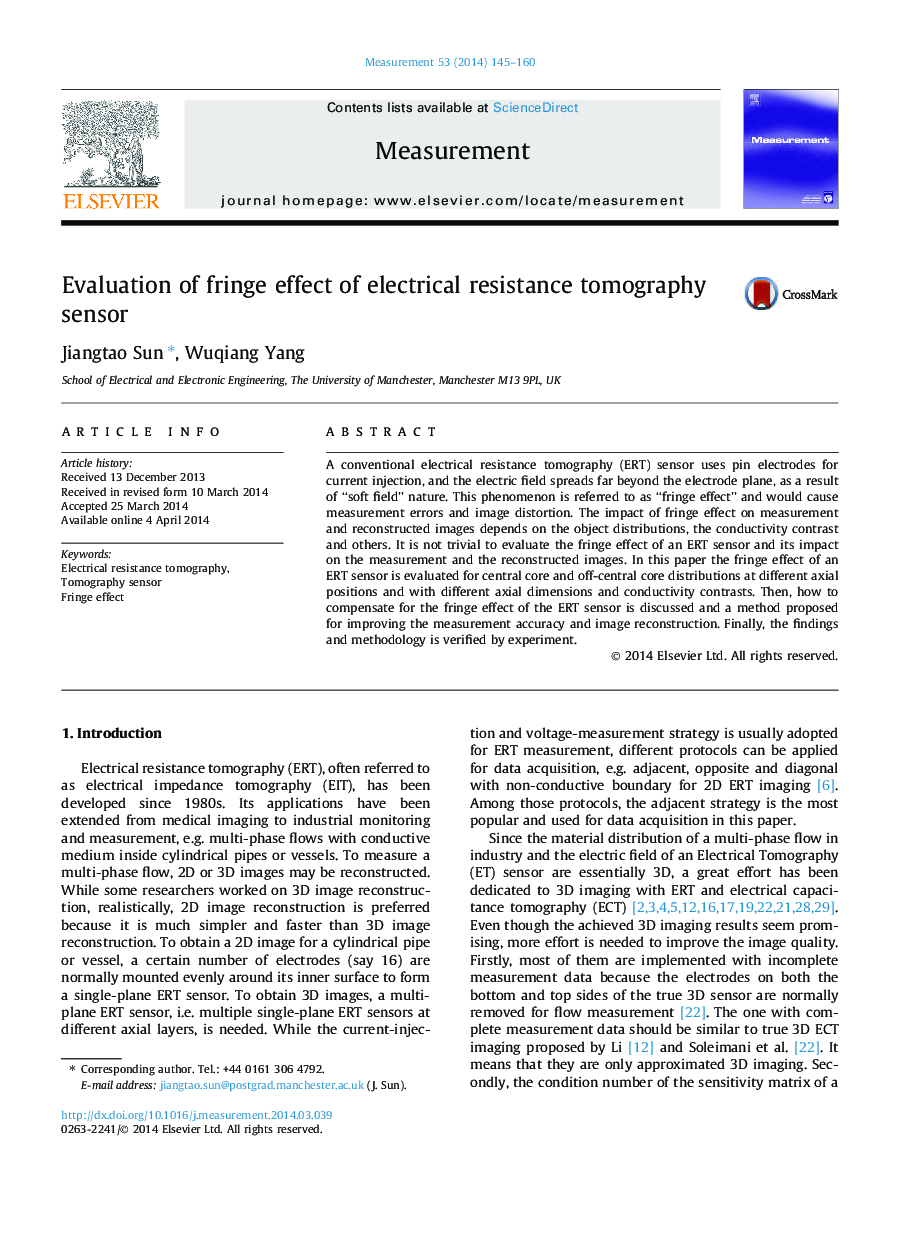| Article ID | Journal | Published Year | Pages | File Type |
|---|---|---|---|---|
| 7125233 | Measurement | 2014 | 16 Pages |
Abstract
A conventional electrical resistance tomography (ERT) sensor uses pin electrodes for current injection, and the electric field spreads far beyond the electrode plane, as a result of “soft field” nature. This phenomenon is referred to as “fringe effect” and would cause measurement errors and image distortion. The impact of fringe effect on measurement and reconstructed images depends on the object distributions, the conductivity contrast and others. It is not trivial to evaluate the fringe effect of an ERT sensor and its impact on the measurement and the reconstructed images. In this paper the fringe effect of an ERT sensor is evaluated for central core and off-central core distributions at different axial positions and with different axial dimensions and conductivity contrasts. Then, how to compensate for the fringe effect of the ERT sensor is discussed and a method proposed for improving the measurement accuracy and image reconstruction. Finally, the findings and methodology is verified by experiment.
Related Topics
Physical Sciences and Engineering
Engineering
Control and Systems Engineering
Authors
Jiangtao Sun, Wuqiang Yang,
